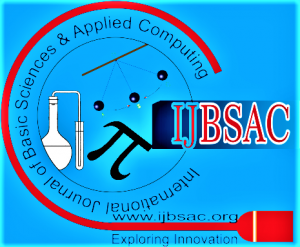DNA Based Molecular Detection Methods of Biological Adulterations in Commercial Teas: Successes and Obstacles
Perulu Madhusudana Patra1, Digvijay Pandey2, Aswini. R3, Chetana Krishnan4, Poulomi Saha5
1Perulu Madhusudana Patra, SRM DBT Facility, SRM Institute of Science and Technology, Chennai (Tamil Nadu), India.
2Digvijay Pandey, Department of Technical Education, IET, Lucknow, (U.P) India.
3Aswini. R, Karpagam Academy of Higher Education, Eachanari Coimbatore (Tamil Nadu), India.
4Chetana Krishnan, Department of Biomedical Engineering, SSN College of Engineering, Kalvakkam Chennai (Tamil Nadu), India.
5Poulomi Saha, Indian Institute of Technology, Guwahati (Assam), India.
Manuscript received on 04 March 2022. | Revised Manuscript received on 06 April 2022. | Manuscript published on 30 April 2022. | PP: 1-11 | Volume-8 Issue-8, April 2022. | Retrieval Number: 100.1/ijbsac.H0474048822 | DOI: 10.35940/ijbsac.H0474.048822
Open Access | Ethics and Policies | Cite | Mendeley | Indexing and Abstracting
© The Authors. Published By: Blue Eyes Intelligence Engineering and Sciences Publication (BEIESP). This is an open access article under the CC-BY-NC-ND license (http://creativecommons.org/licenses/by-nc-nd/4.0/)
Abstract: Extra to water, tea is the broadly consumable hot beverage in the biosphere. People drink more tea than coffee, cold drinks, dairy products, and alcohol combined. Availability does not effectively order the dried plant pieces, which are utilized to make tea. Numerous cases of food adulteration have been recorded in many countries, including India. This has taken to the creation of a new discipline of science, known as ‘green criminology’, to compensate violations of food law. Over the years, new techniques for identifying food adulteration have been developed Here we reviewed different standard DNA based molecular techniques to analyze their performance in identifying tea constituents. Originally, these were sensory techniques, which proved unreliable. Later, physical analysis of the product was done based on data on the label and microscopic evaluation. Later methods, based on the identification of lipids and proteins, were also not accurate due to biochemical changes during processing. These problems provoked scientists to get an interest in the potential of DNA testing. Due to the stability of DNA and the universal applicability of DNA-based methods for all cells, they are ideal for use in practice. Currently, the most reliable test for detecting food adulteration is Bar-HRM, as it is a highly sensitive and specific technique. Broad scale endorsement of the plant’s DNA barcoding may require systems that spot the journey brings about point of view of common plant species names and character for separate firmly close gatherings.
Keywords: Biological Adulterations, Camellia Sinensis, Tea, DNA Barcoding, HRM analysis, DNA based Molecular Modeling and Detection Techniques, Food Adulteration.
Scope of the Article: CHEMISTRY: Bio Chemistry – The Study of Chemical Processes that Occur Inside of Living Organisms.
